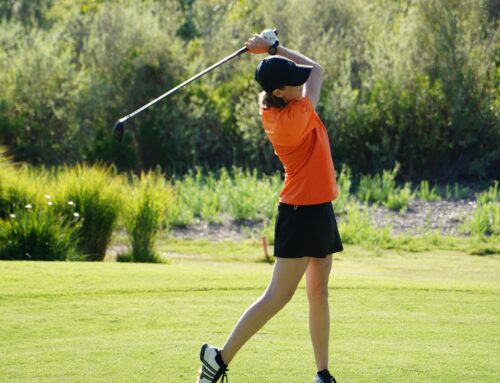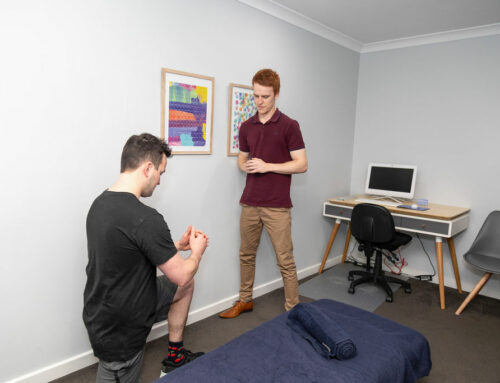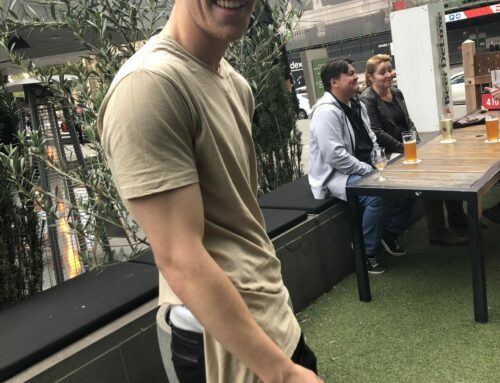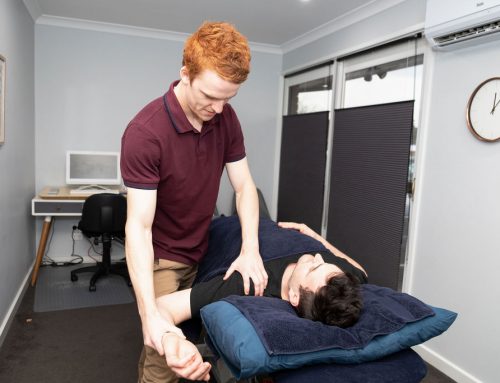I’m sure you’ve seen the memes about knee pain. As we get older we stop referring to our knees as ‘left’ and ‘right’ and instead start calling them ‘good’ and ‘bad’, but it doesn’t have to be and it shouldn’t be like that!
As weight-bearing joints, the health of our knees is important in maintaining an active lifestyle and thus it stands to reason that attending to any aches and pains that pop up from time-to-time is in our best interest for overall health and wellbeing.
Our knee joints may seem like simple structures – how complicated can a joint that only performs two main movements be?! Well…
THE KNEE JOINT – STRUCTURE
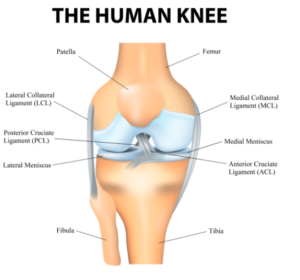 First of all, when we talk about the knee we’re typically talking about two joints; the tibiofemoral joint and the patellofemoral joint. The tibiofemoral joint is formed by the femur (thigh bone) and the tibia (shin bone), and the patellofemoral joint is comprised of the femur and the patella (knee cap).
First of all, when we talk about the knee we’re typically talking about two joints; the tibiofemoral joint and the patellofemoral joint. The tibiofemoral joint is formed by the femur (thigh bone) and the tibia (shin bone), and the patellofemoral joint is comprised of the femur and the patella (knee cap).
The tibiofemoral and patellofemoral joints are protected and supported by a lot of different structures, such as:
- The anterior and posterior cruciate ligaments (ACL/PCL): these ligaments are found deep within the knee joint prevent the tibia and femur moving forwards or backwards excessively, especially when playing sports that require jumping/landing and rapid changes in direction.
- The medial and lateral collateral ligaments (MCL/LCL): much like the ACL and PCL, the collateral ligaments help prevent excessive movement, but rather than forwards and backwards they help limit side-to-side movements. These ligaments are often injured along with the ACL/PCL.
- The medial and lateral menisci: these C-shaped pieces of cartilage sit on top of your tibia and act as shock absorbers, provide cushioning and stability when you’re being active.
- Muscles/tendons: muscles and the tendons that attach them to bone also provide support to the joints they crossover. For example, the quadriceps muscles (the muscles of the front of your thigh) attach to the patella. From here, the patella tendon is formed (the chord-like structure you can flick over at the front of your knee) which anchors the patella to the tibia. With this being said, it’s easy to see how having strong quadriceps can help support your knee. Of course, it’s not as simple as just being a quad-zilla as you have other muscles such as the hamstrings and calf muscles that also provide support and stability when you’re going about your day.
COMMON CONDITIONS THAT AFFECT THE KNEE
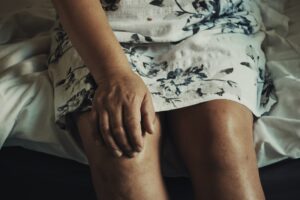 Aches and pains in the knees are common but their origin can be complex. Some of the complaints/conditions that our osteopaths see regularly in the clinic are:
Aches and pains in the knees are common but their origin can be complex. Some of the complaints/conditions that our osteopaths see regularly in the clinic are:
- Lateral patella tracking/patella maltracking/patellofemoral pain syndrome: as the name suggests, this occurs when the patella moves excessively in any given direction (usually away from the midline of the body). This can occur for a number of reasons, including muscular imbalance. Check out this blog for more information.
- Knee osteoarthritis: more common as we age, the various elements (e.g. cartilage, ligaments, bone) that keep our joints moving well and pain free begin to undergo degenerative changes. More information about osteoarthritis can be found here.
- Meniscus injuries: more common in athletes (traumatic tears) and the elderly (degenerative tears/fraying). More information about meniscus injuries can be found here.
- Ligament injuries (ACL/PCL/MCL/LCL): as aforementioned, ligament injuries commonly occur in athletes after an awkward landing or ‘jarring’ movement.
- Tendon injuries: the tendons that support the knee, namely the patella tendon, can become inflamed or irritated secondary to overuse and repetitive strain.
Here at Pakenham Osteopathy, we are well trained in the assessment, diagnosis and management of knee pain. Whether you’re striving for a personal best in your next marathon or you’re looking to get back into the garden, we want to help you achieve your individual goals.
So, what’s an osteopath and what can we do for you?
QUALIFICATIONS & TRAINING
An Osteopath has 5 years of University training under their belt where they learn to master the difficult task of assessing, diagnosing, treating and managing musculoskeletal injury.
THOROUGH HISTORY & ASSESSMENT
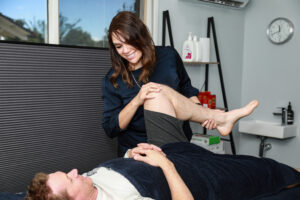 Initial consultations with our osteopaths are 60 minutes long to ensure your story is heard. Every person’s pain is different, so our osteopaths take the time to understand your history and the circumstances surrounding your pain. Our questioning is thorough, ensuring we can tailor an efficient assessment to pinpoint the cause of your pain and develop an individualised management plan based on your goals.
Initial consultations with our osteopaths are 60 minutes long to ensure your story is heard. Every person’s pain is different, so our osteopaths take the time to understand your history and the circumstances surrounding your pain. Our questioning is thorough, ensuring we can tailor an efficient assessment to pinpoint the cause of your pain and develop an individualised management plan based on your goals.
HANDS ON TREATMENT APPROACH
Pain is often the most common reason people seek osteopathic treatment. Therefore, there’s no surprise that osteopaths continue to employ a hands on approach to help decrease pain and get you moving better. There are a vast range of hands on techniques that an osteopath will use including:
- Soft tissue massage & stretching
- Joint mobilisation
- Joint manipulation
- Rigid and kinesio taping
- Dry needling
- Shockwave therapy
INDIVIDUALISED TREATMENT PLAN
Here at Pakenham Osteopathy, we strongly believe that your understanding of your condition or pain plays an important part in your recovery. That is why we take the time to explain your pain and provide you with a written management plan outlining your diagnosis, why it has occurred, expected recovery time and anything else that is required to reach your goals.
HOLISTIC APPROACH
For many people, knee pain can become a recurring annoyance and can affect more than just your work. We believe in long term success and therefore adopt an holistic approach to your injury by not only treating your pain, but also addressing the root cause of your problem. This will reduce the likelihood of pain returning in the future so that you can live a healthy and active life moving forward.
SO WHY SHOULD I SEE AN OSTEOPATH FOR MY KNEE PAIN?
Everyone’s pain is different and everyone has different goals they aspire to achieve. We strive to treat the person, not just the injury. Whether your goals are to run marathons, muck around with the kids or enjoy your time in retirement, we take them very seriously (whilst always having a laugh in the treatment room at the same time!). These goals help us form the basis of our individualised management plan to ensure that together we are able to get you back doing the things that you love.
